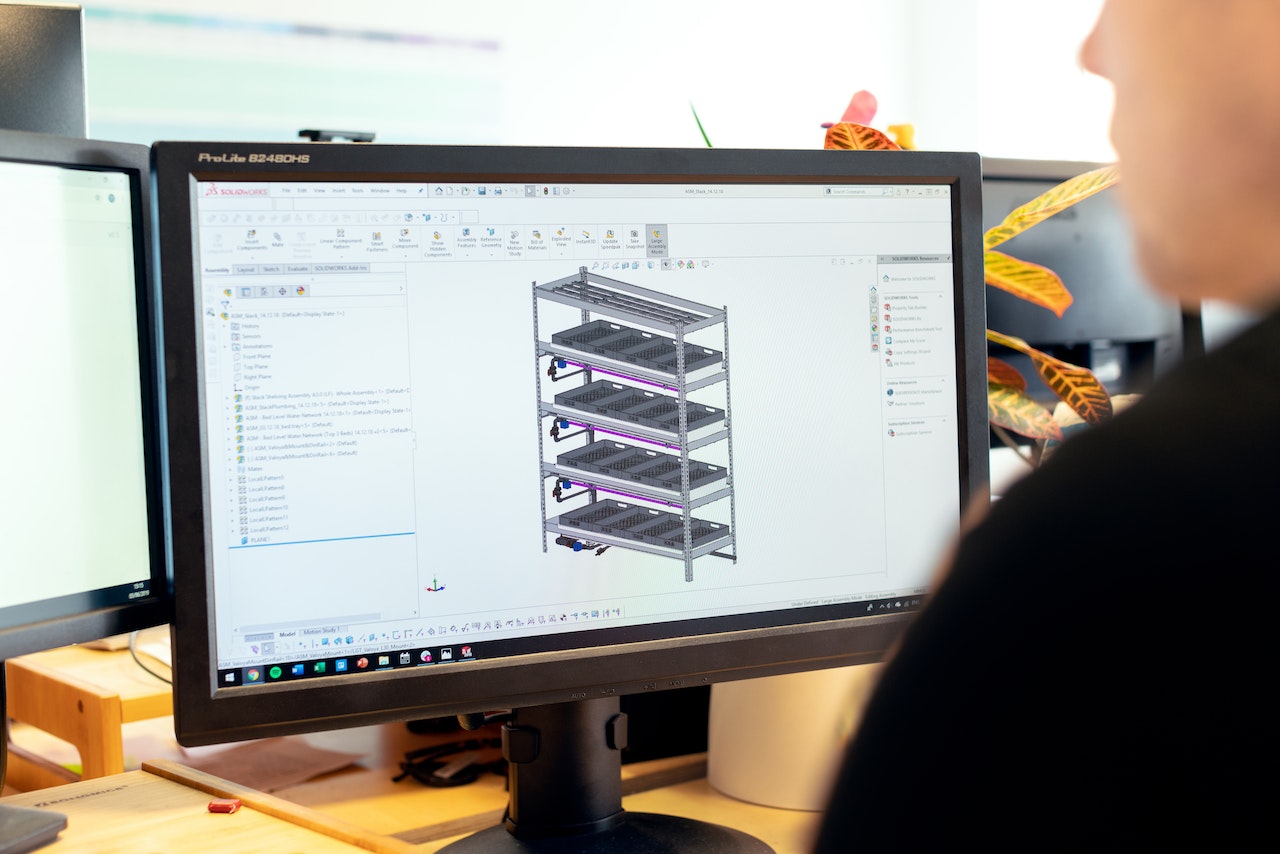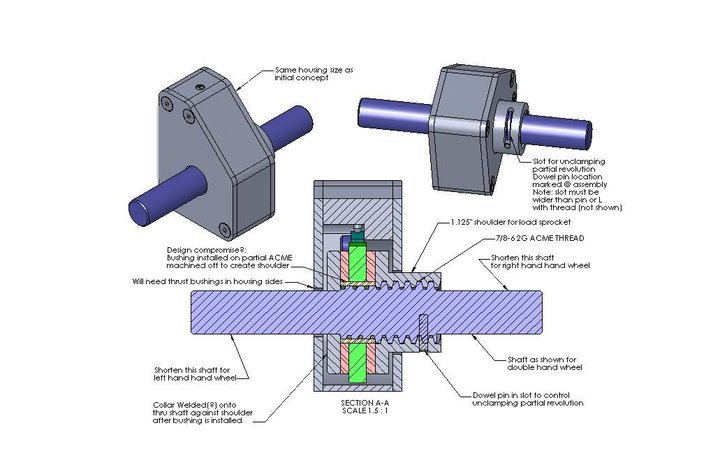There are advantages and disadvantages of outsourcing physical / hardware product design and development to a U.S.-based company.
How Product Development Outsourcing Works
- You contact an outside company to help with design and engineering of your new product.
- The outsourced team assesses your project to determine how strong of a fit their team is.
- If the outsourced team is a good fit for the project, the project plan is developed collaboratively with your team.
- Development work starts, and a process of design, prototyping, testing, and iteration leads to a final design ready for production.
- Production begins and the product is launched.
That’s the short version of a typical outsourced product development process (for a more in-depth look at our process, check out our approach to development).
There are pros and cons to outsourcing product development.
Which makes more sense (outsourcing vs internal development), depends on your scenario.
Let’s start with some cons.
Cons of Outsourcing Product Development
Not Building Product Depth-of-Knowledge
Your internal team isn’t building depth of knowledge specific to the new product. As a long-term business strategy, it usually makes sense to develop deep expertise in the technology that’s baked into your products.
Depending on how the outside firm operates and collaborates, your team might miss out on developing that knowledge. Select an outsourced team that is willing to transfer knowledge to your team through development.
Becoming Post-Development Dependent
Your team may become dependent on the outsourced team: Outsourced development teams can be very efficient at taking a concept from the early stages through to manufacturing.
After manufacturing startup, the products need to be supported, improved, and managed. It’s important to make sure your internal team is equipped to take these things on because development teams are best at…development. Not sustaining engineering. Plan to have your internal engineers focus on optimization, cost reductions, and support of the products long term.
Not Being Plugged in
It takes time and effort from your team to ensure that the outsourced team pursues a design direction that works for your business.
During development, many product-centric decisions impact other parts of your business and have long term implications.
At least one individual from your team will need to be deeply engaged with the outsourced team to make sure that the product comes together in a way that’s in line with your business goals. That individual should have the ability to make product and business decisions. This will minimize the need to pause development for input from your internal team.
Also, plan to be open and transparent with the outsourced team. The more they know about your business, your goals, and priorities, the happier you will be with their work.
Higher Hourly Rate for U.S.-Based Firms
Compared to hiring freelancers or overseas teams, a US-based firm will charge more per hour. While an overseas engineer or rookie freelancer may charge less than $30 per hour, a medium sized US based firm may charge 4-5 times that (circa 2022).
When comparing your options, make sure to fully understand both the direct and indirect costs associated with each. For example, an overseas team may take full time oversight from one of your managers while a domestic team might take 20% of their time to manage. These differences should be quantified and included in the comparison.
IP Ownership Uncertainty
Some firms will want to keep ownership of the IP.
Make sure to understand the contract terms of the firm you work with. Some development companies will want to keep some rights to your design, which is not typically in your best interest.
Cadence Mismatch
Outside firms may want to move at a pace different than your team is used to – faster or slower. Your internal team has a cadence. Outsourced teams will also have a cadence.
The odds that the two will be the same is slim.
Be prepared to for discomfort when things happen slower or quicker than your team is used to. Talk to your team members that are involved with the project and let them know that they’ll be exposed to new methods, and different ways to do things – which will impact cadence. This can be a great way for them to learn new approaches to development, which may become internal norms for your group long term.
Less Invested in Your Success
Outside firms may be less invested in your success than your internal team.
Some firms are just looking to generate revenue or work on sexy projects. If you get the impression that the firm isn’t seeking a long-term relationship, or isn’t thinking about your business needs, consider other options. Choose outsourced teams that ask questions not just about the product – but about how the product fits in to your business.
Those are some cons to watch out for.
Now here’s a list of potential advantages of outsourcing product design / development.
{{cta}}
Advantages / Pros of Outsourcing Product Development
Extending Capabilities
Capabilities beyond what your own team can do. The right outsourced development team will have capabilities that your internal team does not. Many new product initiatives involve new-to-the-market features or functions. It’s fairly likely that these features or functions will also be new to your internal teams.
A solid outsourced development team will have experience in developing products with the features you’re interested in, or at least something similar.

Increased Speed to Market
Outsourced development teams specialize in taking things from concept to completion. Experienced firms are good at executing this work quickly, and their people aren’t distracted by the day-to-day needs of your internal engineering department. This means faster development, and faster launch.
Reduced Likelihood of Unexpected Pitfalls
A good development team will have a breadth of capabilities and experience. This means that somebody on the outsourced team is likely to have learned things the hard way in the past so that you don’t have to.
A good example is regulatory compliance. When entering an adjacent market, or launching a product with new features, it’s easy to miss regulatory requirements that did not apply to your legacy products. A good firm will be able to help you navigate this sort of thing.
Access to Specialists
Access to specialists: Quality development firms will have their own strong internal team, plus a roster of specialists they can bring into projects as needed. The firm will apply the specialists to your project as needed, so you don’t have to find your own specialists and negotiate direct contracts with them.
A good example is antenna design. Specialized antenna design is only needed every once-in-a-while for most product development teams. This makes it impossible to justify hiring a full-time antenna engineer for most businesses. But a good outsourced team will have access to outside specialists (like antenna designers) to add to projects when appropriate.
Ability to Throttle your Spend
Your outsourced firm should be willing to plan your spend rate with you. For example, if your revenue is historically lower in the winter months, the outsourced firm should be willing to reduce the resource level on your project during those months.
New Perspectives
Your internal team is really good at what they do. But fresh ideas and a new take on the problem often nets unexpected solutions. This is sometimes the most valuable outcome of engagements with outside development firms.
Cost Effective
While a professional firm will have hourly rates higher than your employees, they should be competitive compared to your fully burdened and loaded internal rates. Add the fact that at the end of the project you aren’t left with any payroll liability, and outsourced development firms are typically a good value.
.jpg)





